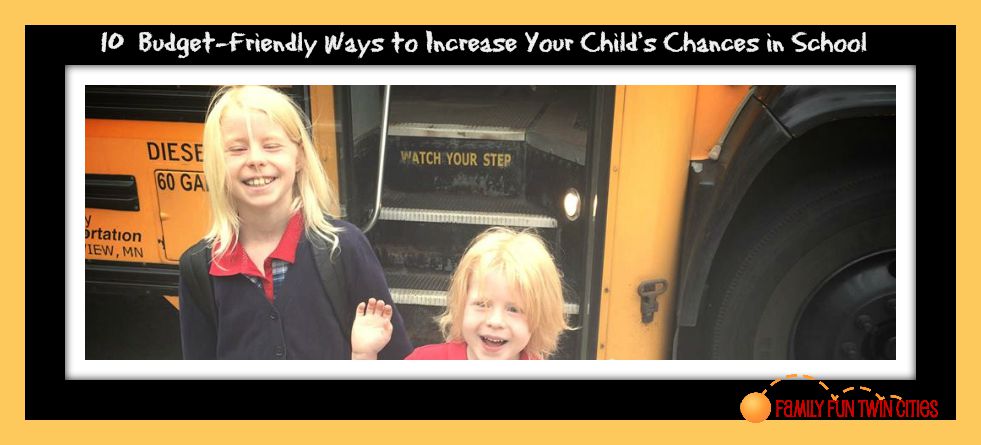According to a 2012 School Readiness Study conducted by the Minnesota Department of Education, parental income is a major factor in a child’s school success. Interestingly, parental education, primary home language, and race/ethnicity were not found to be statistical indicators. Girls tended to perform better than boys.
The odds of reaching the 75 percent standard for a student whose household income was at or above 400 percent of the Federal Poverty Guidelines (FPG) are two times as great as compared to a student whose household income was less than 250 percent FPG when holding all other variables constant. The odds of reaching the 75 percent standard for a student whose household income was 250-400 percent FPG are more than one and half times as great as compared to a student whose household income is up to 250 percent FPG. These results are statistically significant.
2012 School Readiness Study - 12/11/13 Developmental Assessment at Kindergarten Entrance - Fall 2012 Tweet
If you are not sure where your household falls statistically, I’ve included a chart at the end of this article1.
As a friend of mine so aptly said, “BS. It depends on the kid.” This is true. Statistics aren’t rules, but odds are odds and my income leaves my children with a statistical vulnerability I wasn’t expecting.
The good news is that there are various ways within my control to increase my child’s chances of school success. None of my findings will likely surprise you, but doing this research renewed my commitments to focus on these areas of our family life. I originally wrote this article in 2014, but I keep coming back to it. These tactics still ring true for me today. Here are the 10 things I’ve found and where to find budget-minded opportunities in the Twin Cities:
1. Reading Together (and owning books)
According to a Study by the University of Nevada conducted in 2010, “Children growing up in homes with many books get 3 years more schooling than children from bookless homes, independent of their parents’ education, occupation, and class2.” Owning books is great, and you can always pick them up at thrift stores for cheap. However, a free (and less cluttered) option is to max out your library cards regularly and go often, keeping a large, but rotating collection in your home. This means I need a weekly plan for getting to the library. Anne recently checked out several Play and Learn Spaces at various libraries and shared the details.

As important as it is to be surrounded by books, we can’t forget how important it is to actually instill a daily habit of reading. A study published in 1988 showed that children who read 21 minutes per day averaged scores in the 90th percentile, upping that time to 65 minutes per day moved them into the 98th percentile3. For this reason, I let my reader pick her own books entirely, but I prefer to have some say in the books I will be reading out loud. I just can’t do 20 minutes of a poorly written rehash of a popular kids movie, much less even consider an hour.
When the budget allows, it is fun to buy books at local book stores during an author signing. Even when the budget doesn’t allow, you can usually still attend the events. Getting to see the authors, makes reading a little more personal and fun.
2. Getting Out In Nature
The Children and Nature Network has collected studies that link time in nature to benefits for children. A study in the Journal of Attention Disorders in 2009 found that 20 minutes in a park setting increased attention performance in both the general population and in those with ADHD4. A 2014 study found a correlation between outdoor time and an increased ability for pre-teens to pick up on non-verbal cues in communication5.
We don’t lack nature in the Twin Cities. It’s one of my favorite things about living in our metro area.

I might live 10 minutes from Downtown Minneapolis, but there is a variety of wildlife in my neighborhood. Not to mention that the Minneapolis and St. Paul Parks continually rank at the top in the nation in city park rankings. Getting out in nature can be as simple as visiting a nearby park or playing in your own backyard. For more benefits, camping is an inexpensive family hobby or you can simply attend a Free Family Fun Day at one of the Three Rivers Parks.
If you do have a backyard, the Minnesota DNR publishes 25 Easy Nature Play Ideas (Printable PDF). I’ve worked hard to incorporate these into our backyard over the last three summers and I see it working, plus I feel it creates a more overall inviting backyard.
Check out Anne’s article Nature Playgrounds in the Twin Cities: Get Back to Green.
3. Making Time for STEM Activities
STEM stands for Science, Technology, Engineering, Math – fields of study where the achievement gap is often noticed. A January 2014 article by Wilder Research claims that “Large gaps in math skills by income level occur at each grade level measured, elementary through high school.” This particular study divided families by whether they qualified for school lunch (families earning 185% of the poverty level and under qualify for school lunch in Minnesota). The good news is that there is not an interest gap and the Twin Cities has a lot to offer kids who want to learn more.
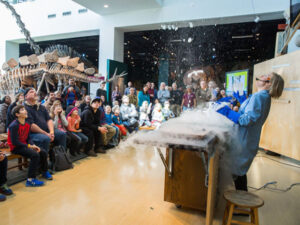
Check Out Some of These Income-Based Programs:
- The Science Museum of Minnesota: If your family qualifies for for the Free/Reduced Cost Lunch Program, you qualify for Limited Income Discounts. Individual tickets are a quarter of the regular price and a membership is half price. Membership includes parking discounts. After purchasing the membership, admission to the museum and tickets to the Omnitheater are free the rest of the year.
- The Minnesota Children’s Museum offers inexpensive memberships for qualifying incomes. Click here to see their income guidelines.
- The Bakken Museum does not offer discounts based on income, however, their family membership price is only $70/year.
- The Works Museum offers the Gateway Access Program for needs-based discounts.
- The Bell Museum has an amazingly affordable membership price for families who qualify for a Curiosity Membership.
These memberships are just the tip of the STEM iceberg. For more ideas, attend the free Math and Science Family Fun Fair at the UofM each year in November and watch your library for special programs.
4. Good Nutrition Habits Are a Basic Factor in School Success
Of all the ideas listed in this article, nutrition is the only one that “can directly modify gene structure and mediate the expression of genetic factors6.” In other words, poor nutrition can inhibit brain development. A small study in 1970 showed an average IQ increase of 18 points when malnourished children were given adequate nutrition7.
Good nutrition does not have to be expensive. The American Heart Association offers this list of healthy foods under $1/serving. It would be fun to make a visual grocery list of these items for my kids and tell them they can each toss in a couple items from this list each shopping trip.

5. Getting to Live Theatre Performances
I wrote a little about the benefits of theatre and why I enroll my children in theatre arts training here. I’ve also described my experience with Children’s Theatre Company’s ACT Pass program. Before I started writing for Family Fun Twin Cities, I was mostly unaware of the variety of ways a family can find cheap or free live performances available to the general public. Now it could dominate my family outings if I let it. I have provided a quick bullet list of the various ways I’ve seen free or cheap plays. There are more. If a theatre interests you, it’s worth it to ask about affordable options. I find it easier to find free stage performances in the summer, however, the main theaters have seasons that correspond with the school year.
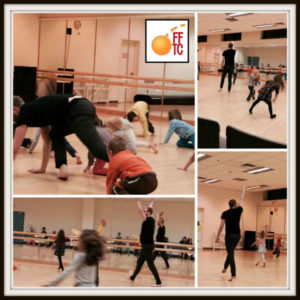
Our Favorite Theatre Discounts:
- Steppingstone Theatre Pay What You Can Performances: Usually offered on the first Saturday of each production (but check their website or our Family Fun Calendar, because occasionally this varies).
- Open Window Theatre Pay-as-You’re-Able Thursdays: Every Thursday night during the regular season $1 minimum!).
- Open Eye Driveway Tour
- Cromulent Shakespeare Company Park Performances
- Stages Pay What You Can Performances and Income Based Open Door Program
6. Making and Enjoying Art
A ten-year study from 1987 to 1997 (PDF) found that art education outside of school considerably impacted children in high risk circumstances. Most of the impact had to do with self-perception. Children who participated in art education program outside of school were more likely than the national average to feel satisfied with themselves and believe they could accomplish their goals.

Another popular study by Jackie Andrade (PDF) done in 2009, showed a link between memory and doodling. So, even just encouraging spontaneous artistic expression in my children could help them score better on tests that require memory.
“Art” is one of the easier free family activities to find around town. I’m finicky though. I see a difference between Art and Craft. Although, I think both have their place, schools are going to concentrate on craft, so I concentrate on art. I see art as expressing oneself with a unique creative voice and I define craft as techniques a person can use to accomplish that expression. For instance coloring in the lines or following directions in a pre-planned project.
- Gianna has rounded up a list of Arts and Crafts for Kids Around Town because she likes to leave the mess elsewhere.
- Walker Art Center’s Free First Saturday and Minneapolis Institute of Art’s Family Day offer pre-planned projects, but the youth program directors at both these museums will encourage open-ended creativity. Plus, it is a great time to explore the museums for inspiration.
7. Practicing A Musical Instrument
Maybe its just because I’m married to a musician, but it seems like more research has been done regarding the correlation between music and education than any other factor. The amount of evidence linking music education and brain development is somewhat overwhelming. The benefits include math, reading, social and emotional gains. In fact, I’ve recently decided that piano practice (when reading music) can count as “reading time,” because I know that we can’t fit it all in and I really believe that music is that important. Take a look at our family fun calendar, and you will always find music programs, but these five stand out.
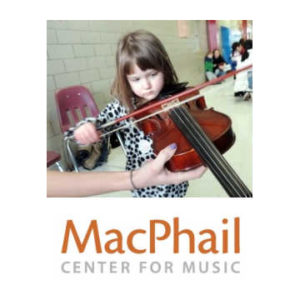
- MacPhail Center for Music’s Free Family Music Series
- The Minnesota Orchestra‘s popular Young People’s Concerts are no longer free, but they are somewhat affordable at $6.25 to $7.00 per person. They also offer Free Summertime Concerts.
- The St. Paul Chamber Orchestra does still offer Free Family Concerts. This is another one that doesn’t go on our calendar because of the speed at which it sells out..
- The Greater Twin Cities Youth Symphony provides all of their concerts free. They are also a resource for young musicians who want to take their playing to a higher level.
- That St. Paul Civic Symphony is always free and always child friendly.
Check our Performing Arts Calendar for these events.
8. Removing the Bedroom TV - An Easy Way to Increase School Success Odds
This statistic floored me: 71% of children have a television in their bedroom. But when I stop to think about it, with streaming services and WiFi, any electronic device or computer amounts to the same thing.
According to John Hopkins University, “A study of elementary school students found that children who had television sets in their bedrooms scored significantly lower on school achievement tests than children without TVs in their bedrooms.”8

Part of this may be the daydreaming factor. According to professor of psychology, Daniel Levitin, daydreaming is an important factor in our brains ability to process information and our brain is unable to do that if it is not given downtime.
I think since it doesn’t cost anything to NOT put a TV in my child’s bedroom or to lock up portable streaming devices, it is probably an easy way to balance factors I can’t easily control.
9. Eating Dinner Together Daily
According to a Columbia University Study children who frequently eat dinner with their family increased their odds of getting A’s and B’s by 40%9. Those are pretty good odds for something that is free to do and the best part of my day.
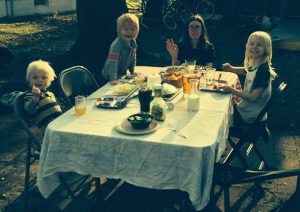
While going out to eat isn’t really budget-friendly, adding kids to the mix can up the price considerably. If you do plan to take the family out, you may want to hit a restaurant that offers a Kids Eat Free deal.
10. Choosing the Right School Can Increase Your Child's School Success
In 2008, Harvard and the Massachusetts Institute of Technology released the results of a study showing that school choice helps disadvantaged children increase their scores IF all testing information is readily available to parents AND there is a good option nearby10. You can find a report card for public schools here. If you are considering a private or parochial school, the school itself usually offers that information readily.
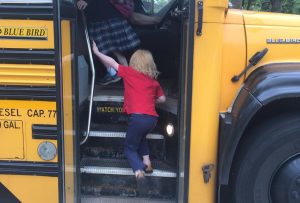

But before we get shopping, I wanted to let you know about a new pizza and pizza dough that’s out there made with two ingredients.
What are the two ingredients?- Greek yogurt from Wisconsin farms
- 100% organic whole wheat
 Just a final note. I’m not advocating running your children into the ground to chase a highly subjective definition of success that probably has a lot to do with income and social status. I do, however, believe that spending time together as a family in a pursuit of educational improvement is a happy way to idle away our free time. If my children choose to be traditionally successful I will be as proud of them as I will if they choose a less traditional definition of success. I believe that all of these things can be done as a form of family bonding — and that may be the most important key to their future happiness and success.
Just a final note. I’m not advocating running your children into the ground to chase a highly subjective definition of success that probably has a lot to do with income and social status. I do, however, believe that spending time together as a family in a pursuit of educational improvement is a happy way to idle away our free time. If my children choose to be traditionally successful I will be as proud of them as I will if they choose a less traditional definition of success. I believe that all of these things can be done as a form of family bonding — and that may be the most important key to their future happiness and success. Citations
12021 Poverty Guidelines
| 2021 POVERTY GUIDELINES FOR THE 48 CONTIGUOUS STATES AND THE DISTRICT OF COLUMBIA | |
|---|---|
| PERSONS IN FAMILY/HOUSEHOLD | POVERTY GUIDELINE |
| For families/households with more than 8 persons, add $4,540 for each additional person. | |
| 1 | $12,880 |
| 2 | $17,420 |
| 3 | $21,960 |
| 4 | $26,500 |
| 5 | $31,040 |
| 6 | $35,580 |
| 7 | $40,120 |
| 8 | $44,660 |
Source: U.S. Department of Health & Human Services.
2Evans, M. D. R., et al. Family scholarly culture and educational success: Books and schooling in 27 nations. Research in Social Stratification and Mobility (2010), doi:10.1016/j.rssm.2010.01.002
3Anderson, R. C., Wilson, P. T., & Fielding, L. G. (1988). Growth in reading and how children spend their time outside of school. Reading Research Quarterly, 23
4Department of Natural Resources and Environmental Sciences, University of Illinois, Urbana-Champaign, Urbana, IL 61801, USA. afabrtay@illinois.edu
5Yalda T. Uhls, Minas Michikyan, Jordan Morris, Debra Garcia, Gary W. Small, Eleni Zgourou, Patricia M. Greenfield (2014), Five days at outdoor education camp without screens improves preteen skills with nonverbal emotion cues, doi:10.1016/j.chb.2014.05.036
6Francisco J. Rosales, J. Steven Reznick, and Steven H. Zeisel (2009), Understanding the Role of Nutrition in the Brain & Behavioral Development of Toddlers and Preschool Children: Identifying and Overcoming Methodological Barriers, Nutr Neurosci. 2009 Oct; 12(5): 190–202. doi: 10.1179/147683009X423454
7The School District of Philadelphia, Food for Thought, October 1, 1970.
8Johns Hopkins University Bloomberg School Of Public Health, (July 5, 2005), Television In The Bedroom May Hurt Child’s School Performance
9The importance of family dinners II. The National Center on Addic. and Substance Abuse at Columbia University Web site. Published September 2005. https://www.casafamilyday.org/
10Justine S. Hastings & Jeffrey M. Weinstein, 2008. “Information, School Choice, and Academic Achievement: Evidence from Two Experiments,” The Quarterly Journal of Economics, MIT Press, vol. 123(4), pages 1373-1414, November.

